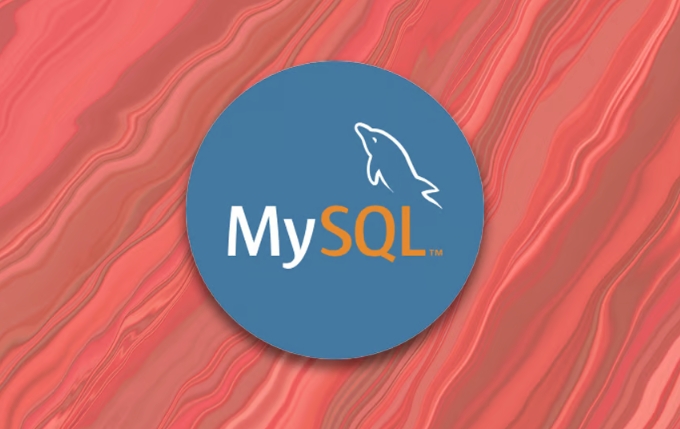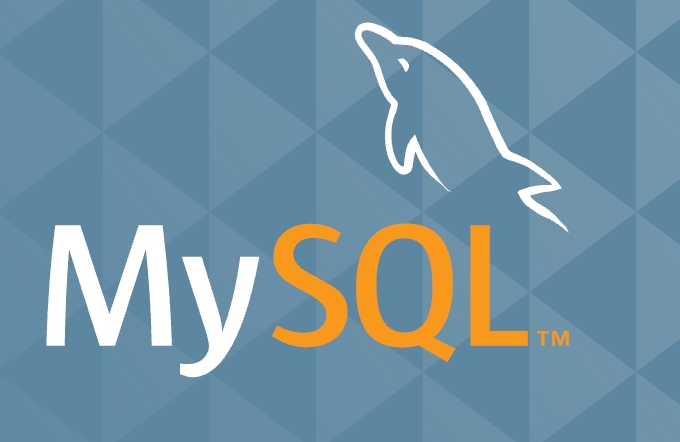The steps to create a read-only user are as follows: 1. Create a user with the CREATE USER command, 2. GRANT command grant SELECT permissions, 3. Specify the accessed database and tables, 4. Execute FLUSH PRIVILEGES to ensure that the permissions take effect; to improve security, you can restrict visible fields through view or combine the application layer desensitization process; common problems such as mis-granting other permissions, not recycling of unnecessary permissions, not refreshing permissions, and improper host settings. It is recommended to check the user permissions after operation to ensure the configuration is correct.

The steps to create a read-only user are not complicated, but the key is to ensure proper permission control and avoid misoperation, which leads to data leakage or modification. Let’s talk about the key points directly below.

Basic statements for creating read-only users
The most common way to create read-only users in MySQL is to use CREATE USER and GRANT commands. The basic structure is as follows:
CREATE USER 'readonly_user'@'host' IDENTIFIED BY 'password'; GRANT SELECT ON database_name.table_name TO 'readonly_user'@'host';
-
SELECTpermission means that the user can only query data. -
database_name.table_namecan be specified as a specific table, or*.*can be used to represent all databases and tables (not very recommended). -
'host'is usually'localhost'or'%', indicating which host is allowed to connect from.
For example:

CREATE USER 'report_user'@'%' IDENTIFIED BY 'securePass123'; GRANT SELECT ON sales_data.* TO 'report_user'@'%'; FLUSH PRIVILEGES;
Note: After executing the permission change, it is best to run FLUSH PRIVILEGES; ensure that the permissions take effect immediately.
Controlling access scope is more secure
What many people will ignore is that even if only SELECT permission is granted, if there is sensitive information in the database (such as user password, ID number, etc.), this read-only account can still see these fields. so:

- If you want only some fields to be seen by the user, you can consider limiting exposed columns through views (VIEW).
- Or combine the application layer for desensitization.
For example, if you only want users to see the order number and amount, but don't want them to see the customer's mobile number:
CREATE VIEW order_summary AS SELECT order_id, amount FROM orders; GRANT SELECT ON sales_data.order_summary TO 'report_user'@'%';
This way, even if the user has permission, the privacy fields in the original table cannot be seen.
Avoid some common pitfalls
Sometimes you may think that the user is already read-only, but there are actually potential risks. Here are some common questions:
- ? Do not give default permissions other than
USAGEpermissions, otherwise you may have indirect write permissions. - ? Forgot to recycle other permissions, such as
INSERTwas granted before, but later it was changedSELECT, and I need toREVOKE INSERT ... - ?There is no refresh permission when using root user authorization, resulting in the configuration not taking effect.
- ? The appropriate host is not set, such as the use of
'%'when it should have restricted access to the intranet, which brings security risks.
It is recommended to check user permissions after each operation:
SHOW GRANTS FOR 'report_user'@'%';
Basically that's it. As long as you follow the above method, you can create a truly "read-only" MySQL user, which not only meets business needs but does not affect system security.
The above is the detailed content of mysql create read only user. For more information, please follow other related articles on the PHP Chinese website!

Hot AI Tools

Undress AI Tool
Undress images for free

Undresser.AI Undress
AI-powered app for creating realistic nude photos

AI Clothes Remover
Online AI tool for removing clothes from photos.

Clothoff.io
AI clothes remover

Video Face Swap
Swap faces in any video effortlessly with our completely free AI face swap tool!

Hot Article

Hot Tools

Notepad++7.3.1
Easy-to-use and free code editor

SublimeText3 Chinese version
Chinese version, very easy to use

Zend Studio 13.0.1
Powerful PHP integrated development environment

Dreamweaver CS6
Visual web development tools

SublimeText3 Mac version
God-level code editing software (SublimeText3)

Hot Topics
 How to install MySQL 8.0 on Windows/Linux?
Jun 11, 2025 pm 03:25 PM
How to install MySQL 8.0 on Windows/Linux?
Jun 11, 2025 pm 03:25 PM
The key to installing MySQL 8.0 is to follow the steps and pay attention to common problems. It is recommended to use the MSI installation package on Windows. The steps include downloading the installation package, running the installer, selecting the installation type, setting the root password, enabling service startup, and paying attention to port conflicts or manually configuring the ZIP version; Linux (such as Ubuntu) is installed through apt, and the steps are to update the source, installing the server, running security scripts, checking service status, and modifying the root authentication method; no matter which platform, you should modify the default password, create ordinary users, set up firewalls, adjust configuration files to optimize character sets and other parameters to ensure security and normal use.
 How to enable SSL/TLS encryption for MySQL connections?
Jun 11, 2025 pm 03:29 PM
How to enable SSL/TLS encryption for MySQL connections?
Jun 11, 2025 pm 03:29 PM
Enable MySQL's SSL/TLS encryption connection can effectively prevent data leakage. The specific steps are as follows: 1. Confirm that the MySQL version supports SSL, and check whether the return value is YES through SHOWVARIABLESLIKE'have_ssl'; 2. Prepare a PEM format certificate file (ca.pem, server-cert.pem, server-key.pem), which can be generated through OpenSSL or obtained from CA; 3. Modify the MySQL configuration file, add ssl-ca, ssl-cert and ssl-key paths in the [mysqld] section and restart the service; 4. Force the client to use SSL, and use CREATEUSER
 What is the default username and password for MySQL?
Jun 13, 2025 am 12:34 AM
What is the default username and password for MySQL?
Jun 13, 2025 am 12:34 AM
The default user name of MySQL is usually 'root', but the password varies according to the installation environment; in some Linux distributions, the root account may be authenticated by auth_socket plug-in and cannot log in with the password; when installing tools such as XAMPP or WAMP under Windows, root users usually have no password or use common passwords such as root, mysql, etc.; if you forget the password, you can reset it by stopping the MySQL service, starting in --skip-grant-tables mode, updating the mysql.user table to set a new password and restarting the service; note that the MySQL8.0 version requires additional authentication plug-ins.
 What is the MySQL binary log (binlog) and what is it used for?
Jun 11, 2025 pm 03:41 PM
What is the MySQL binary log (binlog) and what is it used for?
Jun 11, 2025 pm 03:41 PM
MySQL's binary log (binlog) is a binary log that records database change operations, and is used in scenarios such as data recovery, master-slave replication and auditing. 1. Binlog is a logical log file that records all operation events that modify data, such as INSERT, UPDATE, DELETE, etc., but does not include SELECT or SHOW query statements; 2. Its main uses include: data recovery through replay logs, supporting master-slave copying to achieve data synchronization, and used to analyze operation records to meet audit requirements; 3. Enable binlog requires setting log-bin, server-id, binlog_format and expire_logs_day in the configuration file.
 How to change or reset the MySQL root user password?
Jun 13, 2025 am 12:33 AM
How to change or reset the MySQL root user password?
Jun 13, 2025 am 12:33 AM
There are three ways to modify or reset MySQLroot user password: 1. Use the ALTERUSER command to modify existing passwords, and execute the corresponding statement after logging in; 2. If you forget your password, you need to stop the service and start it in --skip-grant-tables mode before modifying; 3. The mysqladmin command can be used to modify it directly by modifying it. Each method is suitable for different scenarios and the operation sequence must not be messed up. After the modification is completed, verification must be made and permission protection must be paid attention to.
 What is GTID (Global Transaction Identifier) and what are its advantages?
Jun 19, 2025 am 01:03 AM
What is GTID (Global Transaction Identifier) and what are its advantages?
Jun 19, 2025 am 01:03 AM
GTID (Global Transaction Identifier) ??solves the complexity of replication and failover in MySQL databases by assigning a unique identity to each transaction. 1. It simplifies replication management, automatically handles log files and locations, allowing slave servers to request transactions based on the last executed GTID. 2. Ensure consistency across servers, ensure that each transaction is applied only once on each server, and avoid data inconsistency. 3. Improve troubleshooting efficiency. GTID includes server UUID and serial number, which is convenient for tracking transaction flow and accurately locate problems. These three core advantages make MySQL replication more robust and easy to manage, significantly improving system reliability and data integrity.
 What is a typical process for MySQL master failover?
Jun 19, 2025 am 01:06 AM
What is a typical process for MySQL master failover?
Jun 19, 2025 am 01:06 AM
MySQL main library failover mainly includes four steps. 1. Fault detection: Regularly check the main library process, connection status and simple query to determine whether it is downtime, set up a retry mechanism to avoid misjudgment, and can use tools such as MHA, Orchestrator or Keepalived to assist in detection; 2. Select the new main library: select the most suitable slave library to replace it according to the data synchronization progress (Seconds_Behind_Master), binlog data integrity, network delay and load conditions, and perform data compensation or manual intervention if necessary; 3. Switch topology: Point other slave libraries to the new master library, execute RESETMASTER or enable GTID, update the VIP, DNS or proxy configuration to
 How to alter a large table without locking it (Online DDL)?
Jun 14, 2025 am 12:36 AM
How to alter a large table without locking it (Online DDL)?
Jun 14, 2025 am 12:36 AM
Toalteralargeproductiontablewithoutlonglocks,useonlineDDLtechniques.1)IdentifyifyourALTERoperationisfast(e.g.,adding/droppingcolumns,modifyingNULL/NOTNULL)orslow(e.g.,changingdatatypes,reorderingcolumns,addingindexesonlargedata).2)Usedatabase-specifi






